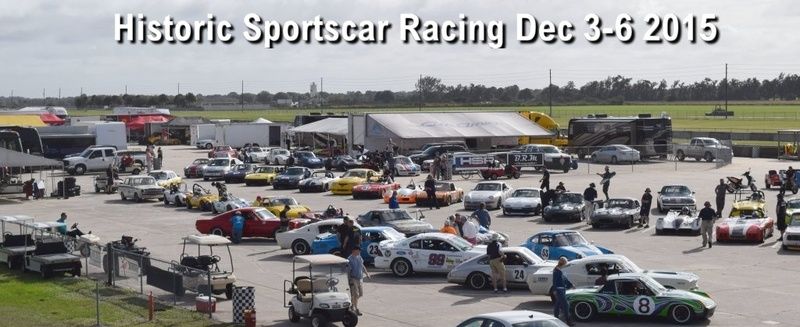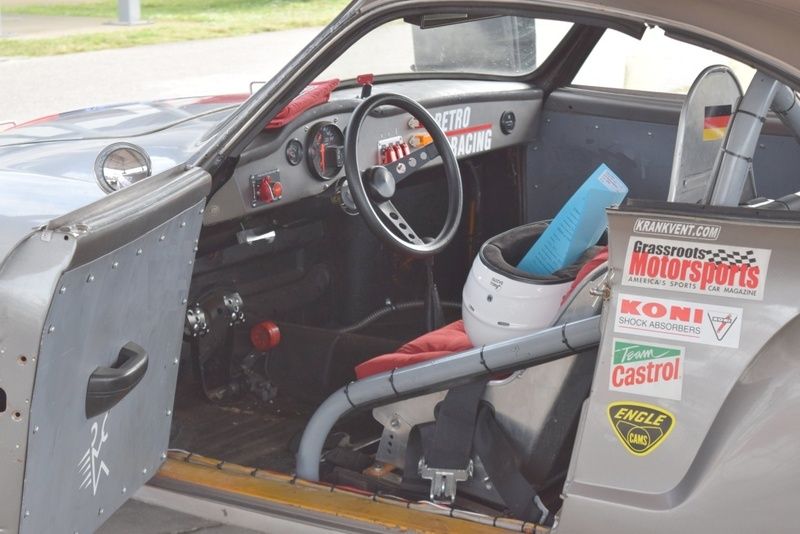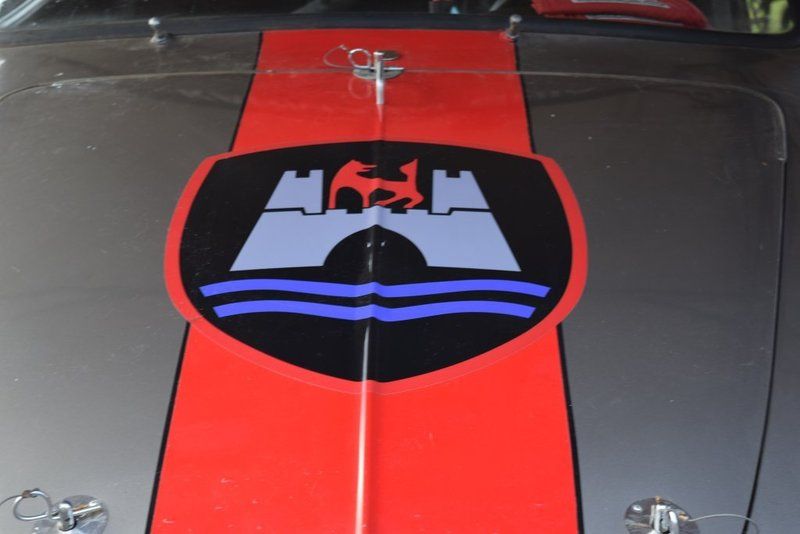
Above. Lions and tigers and bears, oh my! That's some stiff competition. Find the Ghia. Waldo left it parked on the grid, first car in top line from top left.
We Get Beat by Our Own Webers

Those of you who know us at RetroRacing know we favor what the VW guys call Kadrons, but by the Porsche types as Solexes.
Today's garden variety Kad can be traced right back to the big single-barrel Solexes that came on Speedster Supers. Except the
modern Kad is a more tunable carb, with replaceable throttle bodies.
The problem with the single barrel Solexes is they, because of intake manifold design don't flow as much as the Webers, and top
end is less. But, low and midrange power is excellent. The Kaddie Shack in Pasadena makes Kadron carbs that beat V8 Mustangs
at the drags, using just port-matched stock manifolds.
Apparently overlooked by a majority of VW tuners is information in Bill Fisher's 1971 epic "How to Hotrod VW Engines" in his carb
dyno tests. A set of cheap Holly Bug Spray carbs on 28mm venturis almost exactly equaled Weber 48's on 35mm vents up to 5500
RPM. Fisher felt with a little work, the Holley's would do better.
Normally we would have come to race with Solexes fitted, but I made the decision to use our Weber 44 IDF's instead, hoping for
some extra top end on the long Sebring straights.

We drove the long 14 hours from Birmingham to Sebring in south Florida, towing our newly rebuilt Ghia. It had last been on a race
track in May 2007. It had spent the last eight years in storage as we campaigned a 1965 swing axle Ghia. Over the last few months,
we had rebuilt the IRS Ghia with HSR in mind. We called the '65 our "Mexico Ghia" in honor of its participation in the Carrera. The IRS
Ghia we will call the Sprint Ghia. Most HSR practice and qualifying sessions and races are sprints of about fifteen minutes duration.
For aero, the Sprint Ghia uses a front airdam and 911 RSR-style duck tail. Also, we have added caster and negative camber up front,
four-wheel disk brakes with 9" diameter rotors and ATE-style dual 40mm calipers, Prothane suspension bushings everywhere, and we
have a 19mm swaybar on the axle beam and none on the rear suspension.
Lowering is accomplished with tire aspect ratios, and a 3.88 final drive allows for about 140mph in 4th with 60-series Falken radials.

Quick-steer and quick-shift kits, and an aluminum driver's seat provide direct tactile feedback. And to accommodate different height
driver's, several steering wheels with different dish depths, all on the same quick-release hardware.
Our Ghia, a 1970 body on a 1972 chassis, is in HSR Class VP4. At HSR, that means being mixed in with the Porsche 912's, Austin
Healy 3000's, MGB's, TR-4's, and basically anything SCCA E-Production. We have a good dry sump system, but we need all the cubic
inches we can get.

Above: Something for everybody -- the Sprint Ghia on track in the background, a Porsche 906 in the foreground between
a big-inch John Greenwood type 'Vette and RSR-styled 911.
A loop hole for the series of VW engines used in the Type 4 and Type 2 vehicles makes us eligible for 2-liters. There is no official "Type 4"
engine, just as there is no official Type 3 engine.
For whatever lucky reason, in the 1972 SCCA GCR (general competition rules) the 1679 cc displacement for the 1700 cc used in the Type 4
sedan was listed as approved for the '72 Ghia. Under most vintage racing practices, that means all following displacements from 1679 cc to
the 1.8 (1795 cc) and 1971 cc (2.0) end of production sizes are grandfathered to us. That means we can run 2 litres when we wish.
Notice we are only specifying displacement, not actual engine number or type. We don't even have to use what we think of as "Type 4" cases
and parts ... this is what's called "racing the rule book."
We have two driver's for this event, both LeMons and Chump veterans in the Blitzwagen. Young David Scott is new both to Sebring and HSR.
"There are cars here I've never seen before, and I still want them," he says. As we towed over the bridge into the track, he heard a Shelby
GT350 Mustang roar past under us in practice. "That did it," he says. "My nipples are so hard now they could cut glass."
The Sprint Ghia had some immediate but minor problems right off the trailer. A broken ignition rotor (presumed crew error from not having both
distributor cap spring clips snapped down, and one clip jammed inside the distributor), and a brand new distributor cap misfiring because of plastic
flash being molded over two internal contacts. Lesson learned. Stick to Bosch Bakelite caps.
On our first practice session, co-driver Jamie "Jamrod" Chambers was setting on the grid, waiting for the wave-off to the track, when he noticed
that revving over 3k RPM, up to 5k, the engine was missing. When he did get to the track, there was nothing above 5k but an engine with no power
and loud popping and backfiring.
Back in the shop, the engine had idled well and tuned properly, but we were not revving the hell out it while under no load.
Jamie makes a couple of laps and comes in. He was a rolling roadblock in a meteor storm of serious racers.
Back in the paddock, we check out fuel cell breathing, timing, ignition, jets, fuel pressure and delivery, valve adjustments, but it all seemed right. If
anything, the problem was getting worse. David and Jamie were blaming the Weber 44's. I was not so sure, figuring if it was the Webers, the same
thing had to be wrong with both of them. I expected something more like a bizarre, hidden problem in all the new wiring.
All the time we worked on the Sprint Ghia, concerned spectators and HSR members kept coming and offering whatever help they could.
Most of them loved the Ghia, many had their photos taken with it, and we began to feel that we didn't have to race, just show up and
sell "Touch The Ghia" tickets.
The Ghia is in it's element at HSR. It's curvy beauty fits in. Most of the automotive Philistines you meet on the street don't know or care
much about a Ghia, unless they had a friend who had one in college (or where ever) and it was fun.
Without spare carbs, after a day we finally pack up and tow 14 hours home. The trip is rife with speculation about what all the problem
might be, but we agree on one thing. Before doing anything else, we will swap the Webers for a set of Solexes and see what happens.
Jamie does the swap. The Solexes go on, and the engine starts easily and runs, warms up, and revs high strong for as long as we're
bold enough to hold down the throttle. We didn't even set the idle mixture.
I'll do a postmortem on the Webers later. I doubt we'll ever use anything Weber ever again, now that we've commissioned custom Solex
manifolds made to even the playing field.
Our next HSR is Road Atlanta in March, at the famous/infamous MITTY.



